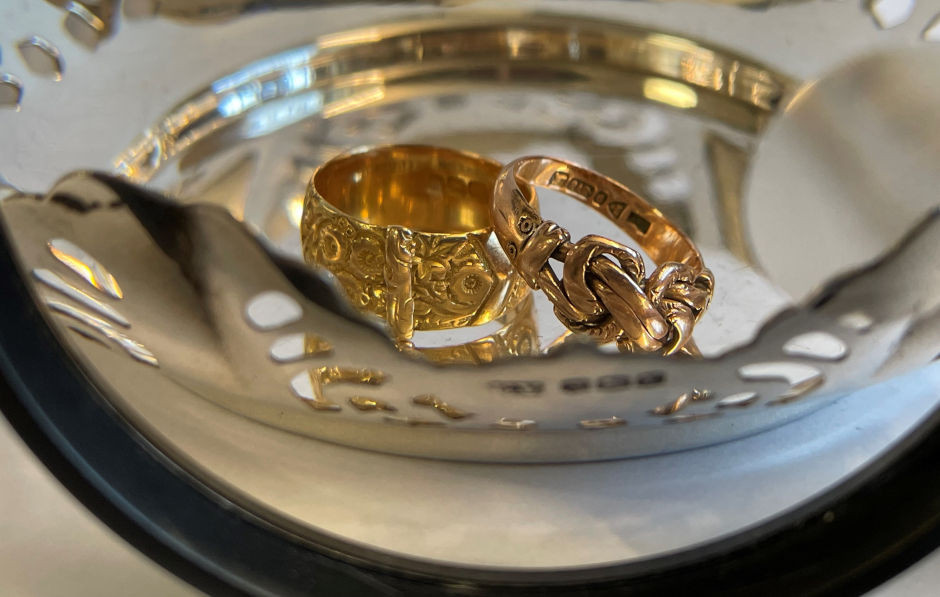
To own a piece of antique gold is to own a piece of history and the hallmarks on the gold, as with the hallmarks on silver pieces which are different, will help you to discover exactly how old it is, what kind of gold was used to create it, and where and when it was made.
What is a hallmark?
A hallmark is a series of stamps applied to items made from precious metals such as platinum, gold and silver. Hallmarks reassure a buyer of the quality and purity of the metal, identifying who made the piece, where and when.
Prior to 1998, a hallmark consisted of four compulsory marks – the maker’s mark, the metal purity, the assay office responsible for carrying out the testing and hallmarking, and the date mark. The date mark is no longer compulsory.
What is an assay office?
An assay office is an institution responsible for assaying, or testing, precious metals. Once an item has been tested and shown to conform with the legal requirements for purity, the assay office applies a hallmark to the metal. In the UK there are currently four assay offices in London, Birmingham, Sheffield and Edinburgh. Historically, however, there have been others in Norwich, York, Exeter, Newcastle, Chester and Glasgow. Each assay office has its own identifying stamp which forms part of the hallmark and which identifies where the piece was assayed.
Current assay office marks
London – a leopard’s head.
Birmingham – an anchor.
Sheffield – pre 1974 a crown, since 1974 a Yorkshire rose.
Edinburgh – a three-towered castle denotes Edinburgh and between 1759 and 1974 there was also a thistle. This was changed in 1975 to a lion rampant (a lion in profile standing erect with forepaws raised).
Historic assay office marks
Norwich – dating back to the 1500s, the original mark for Norwich was a castle and lion passant (a lion walking with right forepaw raised and all other paws on the ground), accompanied by a date letter and a maker’s mark. A seeded rose crowned was added in the early 17th century as an additional town mark but this changed in the last half of the century to a stemmed rose. The Norwich office closed in 1702.
York – originating from the mid-16th century, the York assay office had a chequered history, opening and closing several times before finally closing in 1858. The original mark for York was made up of a half leopard head and a half fleur-de-lys. The half leopard head was replaced by a half rose seeded towards the end of the 17th century. Following a closure and reopening, a new symbol – the cross of St. George with five lions passant – was used until the final demise of the office.
Exeter – the original Exeter mark was a crowned letter X in a round shield, which dates from the mid-16th century. When the office was opened officially in 1701, the town mark was a castle with three turrets, differentiated from the Edinburgh mark by a Britannia mark and lion’s head. This changed in 1721 to a leopard’s head and a lion passant in square shields. The office closed in 1883.
Newcastle – the original town mark of three castles (two on top and one below) was joined in 1720 by a leopard’s head crowned, until the office closed in 1884.
Chester – until its closure in 1962, the Chester mark was a shield with the town’s arms plus three sheaves of wheat and a sword.
Glasgow – established in 1819, the Glasgow assay office was identified by a bell, a tree and a fish. The office closed in 1964.
The Maker’s Mark
Also known as the Sponsor’s Mark, this stamp is unique to whoever has sent the piece for testing. With antique gold, this is more likely to be the maker than it is today, with importers, wholesalers and retailers now all having their own mark.
The Standard Mark
The standard mark denotes the purity of the metal and consists of three numbers to show the precious metal content as parts per thousand, within a shaped stamp. The stamp for gold items is a rectangle that has had its corners removed, giving it eight sides. The current numerical format was made compulsory in 1999 so antique gold does not necessarily conform to this format. Antique gold of 18ct and 22ct will be denoted by a crown (for gold) and a numeral, 18 or 22, which were the standards up to 1854. Post 1854, the standards were broadened to include 15ct, 12ct, and 9ct. In 1932, 12ct and 15ct standards were abolished in favour of 14ct. Alloys with a lower percentage of pure metal were stamped with a mark that indicated both the carat weight, as well as the parts per thousands, for example 9 and 375.
Date Stamps
A date mark indicates when a piece was assayed and not necessarily when it was made, although with antique gold there will be little difference, if any. Unlike the metal standard stamps which feature a specific shape depending on the metal, with date stamps the year is shown by letters of the alphabet, usually 25 of the 26 as variously I, J and L have been left out. The letters also vary in typeface, background shape and upper/lower case. Each assay office has its own unique date chart so always identify the assay office mark first and then check for the letter in the office’s reference sheet. While date letters changed annually, not all the assay offices changed the letter on the same day of the year. For example, The Birmingham office changed to a new letter each July while the London office changed in May. Under the UK Hallmarking Act (1973) date stamps were standardised with all offices having the same letter which changes in January.
These are the date letter charts for each of the current assay offices up to the date of the UK Hallmarking Act (1973).
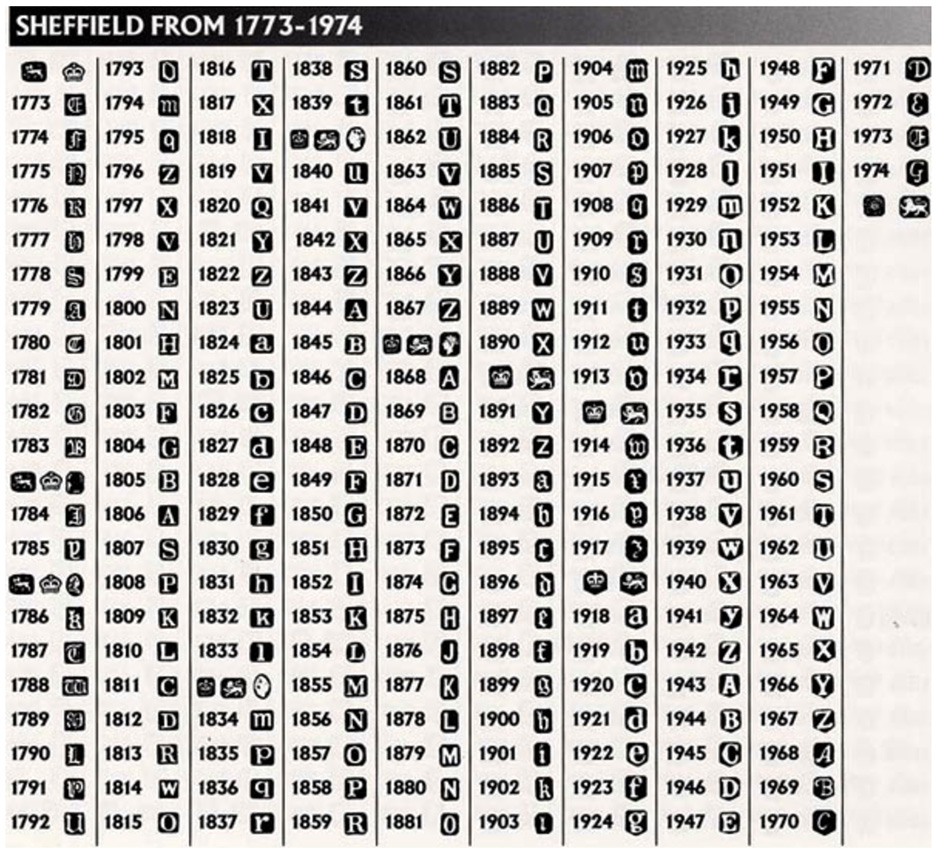
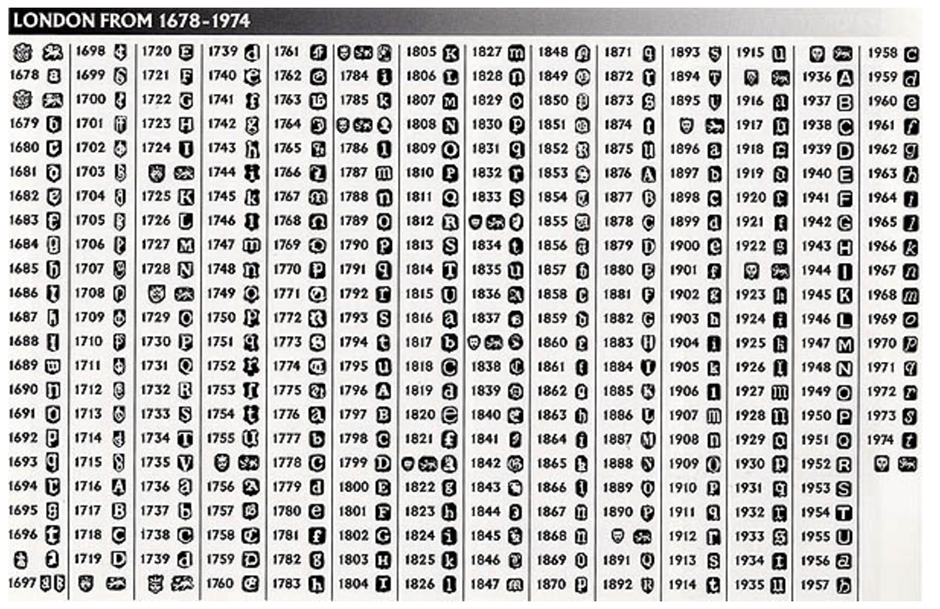
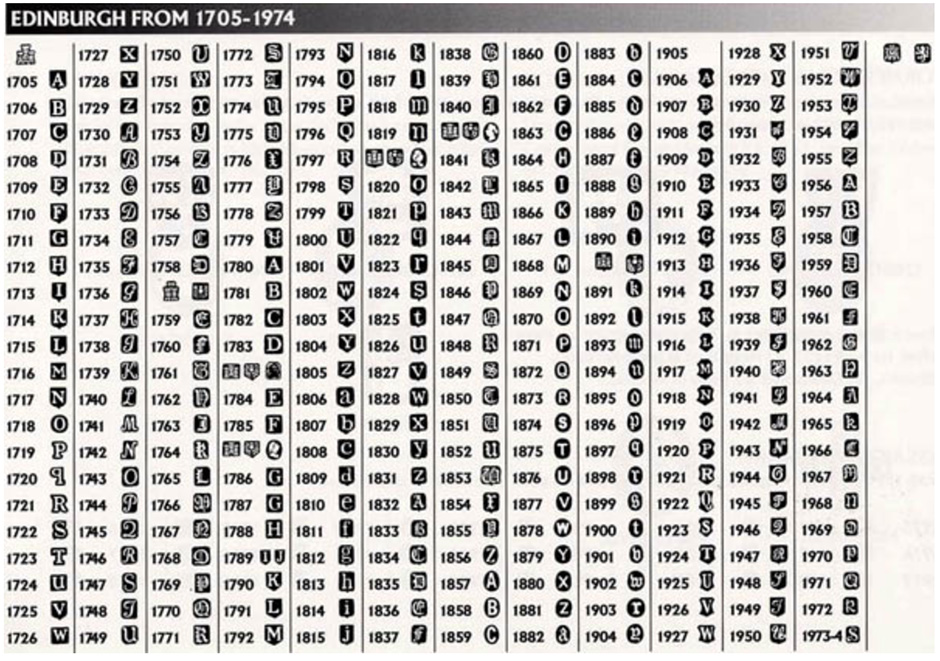
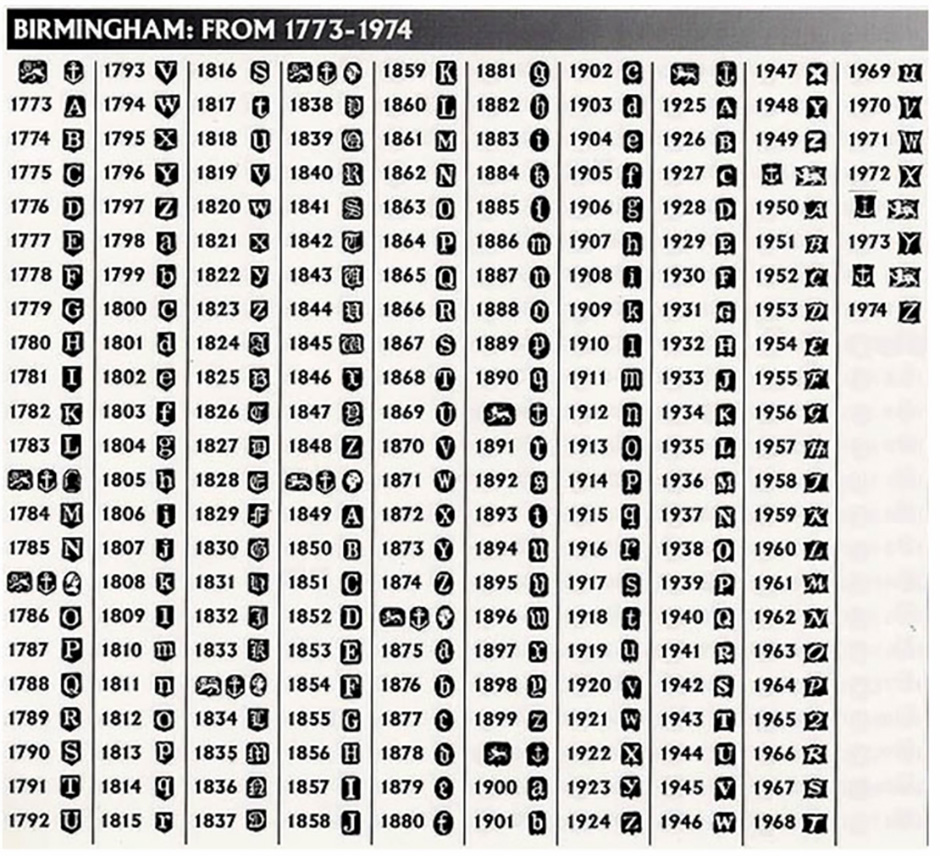
What if there is no hallmark?
Georgian and Victorian jewellery was often not hallmarked, as compulsory hallmarking of all precious metals did not begin until the 1920s. Consequently assay offices carry a pre-1950s exemption from hallmarking. This means that any piece pre-dating the 1950s that is not hallmarked is exempt from the normal requirements of the assay office (further details on this can be found here).
Dating and establishing the authenticity of antique gold can be a minefield, especially in the absence of hallmarks, so it is important to buy from reputable dealers only. Many of our dealers are members of LAPADA (The Association of Art and Antique Dealers) which gives all our clients the peace of mind that these dealers have been externally approved by the association.
Browse our range of Antique Jewellery and Gold where you will discover some stunning antique gold pieces, or why not come and spend a day with us and take your time exploring all four of our buildings, breaking the day up with a trip to one of our coffee shops?